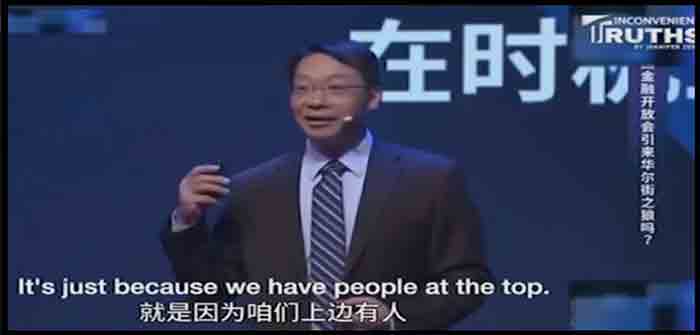
Boy howdy, is this ever a good time to see something we have exposed for years. The CTH library is filled with deep dive evidence of how this process specifically works.
First watch this important segment from Tucker Carlson:
♦ The Modern Third Dimension in American Economics – HERE
♦ How Foreign Governments Write Legislative Outcomes – HERE
♦ How President Trump Disrupted the Scheme – HERE
♦ How Wall Street Multinationals have Exported U.S. Wealth – HERE
♦ The “Fed” Can’t Figure out the New Economics – HERE
♦ The FED Begins to Question the Economic Assumptions – HERE
♦ Treasury Secretary Mnuchin begins creating a Parallel Banking System – HERE
♦ Proof “America-First” has disconnected Main Street from Wall Street – HERE
President Trump’s MAGAnomic and foreign policy agenda is jaw-dropping in scale, scope and consequence. There are multiple simultaneous aspects to each policy objective; they have been outlined for a long time even before the election victory in November ’16.
If you get too far into the weeds the larger picture can be lost. CTH objective is to continue pointing focus toward the larger horizon, and then at specific inflection points to dive into the topic and explain how each moment is connected to the larger strategy.

Today we dive into how MAGAnomic policy interacts with Wall Street, the stock market, the U.S. financial system and perhaps your personal financial value. Again, the ongoing reference and source material is included at the end of the outline.
If you understand the basic elements behind the new dimension in American economics, you already understand how three decades of DC legislative and regulatory policy was structured to benefit Wall Street and not Main Street. The intentional shift in monetary policy is what created the distance between two entirely divergent economic engines.
REMEMBER […] there had to be a point where the value of the second economy (Wall Street) surpassed the value of the first economy (Main Street).
Investments, and the bets therein, expanded outside of the USA. hence, globalist investing…. investing in foreign manufacturing; multinational corporations moved manufacturing outside the U.S. and into Asia (China).
However, a second more consequential aspect happened simultaneously. The politicians became more valuable to the Wall Street team than the Main Street team; and Wall Street had deeper pockets because their economy was now larger.
As a consequence Wall Street started funding political candidates and asking for legislation and trade policies that benefited their, now international, interests.
When Main Street was purchasing the legislative influence the outcomes were -generally speaking- beneficial to Main Street, and by direct attachment those outcomes also benefited the average American inside the real economy.
When Wall Street began purchasing the legislative influence, the outcomes therein became beneficial to Wall Street. Those benefits are detached from improving the livelihoods of main street Americans because the benefits are “global”.
Global financial interests, multinational investment interests -and corporations therein- became the primary filter through which the DC legislative outcomes were considered.
There is a natural disconnect. (more)
As an outcome of national monetary policy allowing the blending of commercial banking with institutional investments (Glass-Stegal repeal), something happened on Wall Street that few understand.
If we take the time to understand what happened we can understand why the Stock Market grew and what risks exist today as U.S. policy is reversed to benefit Main Street.
 President Trump and Treasury Secretary Mnuchin have already begun assembling and delivering a new banking system.
President Trump and Treasury Secretary Mnuchin have already begun assembling and delivering a new banking system.
Instead of attempting to put Glass-Stegal regulations back into massive banking systems, the Trump administration began supporting a parallel, smaller financial system, of less-regulated small commercial banks, credit unions and traditional lenders who can operate to the benefit of Main Street without the burdensome regulation of the mega-banks and multinationals. This really is one of the more brilliant solutions to work around a uniquely American economic problem…
Continue Reading